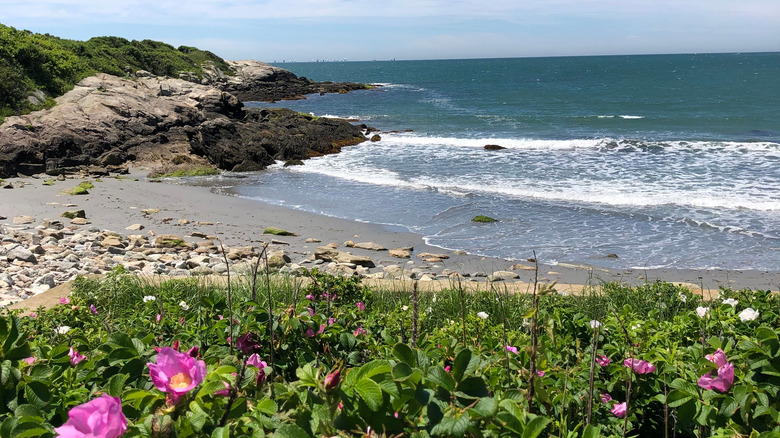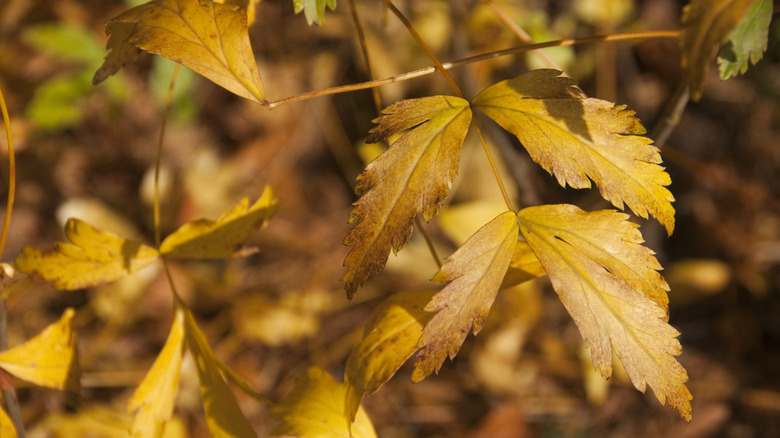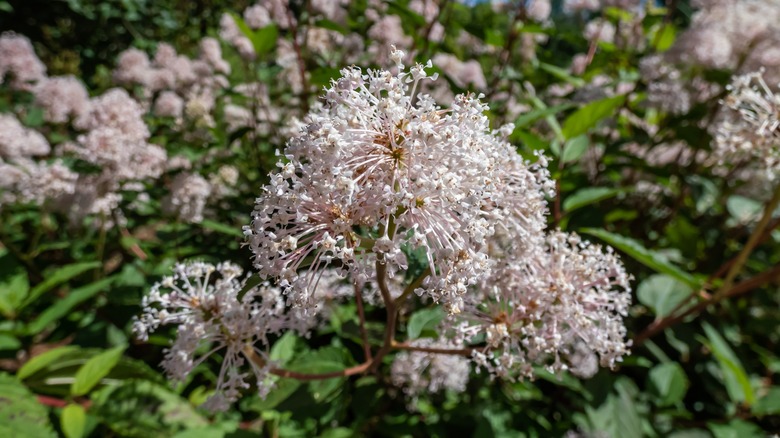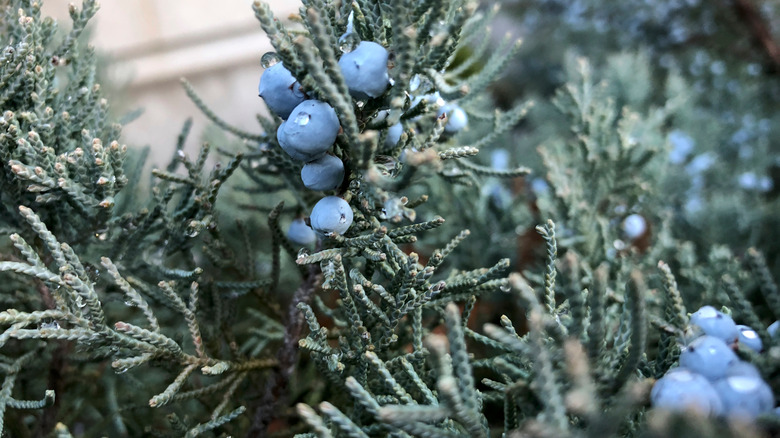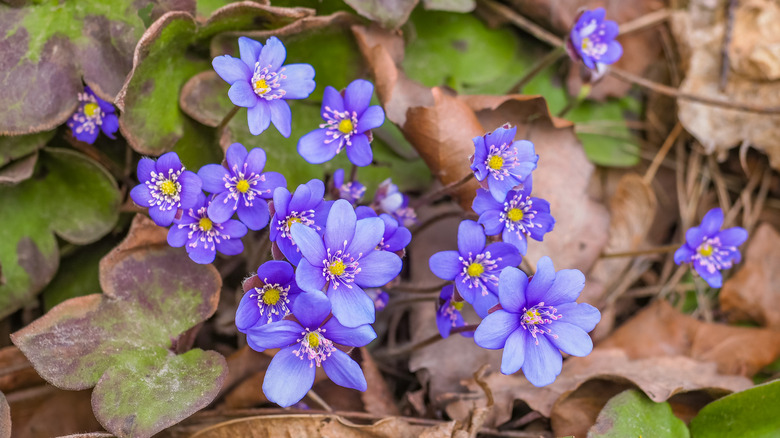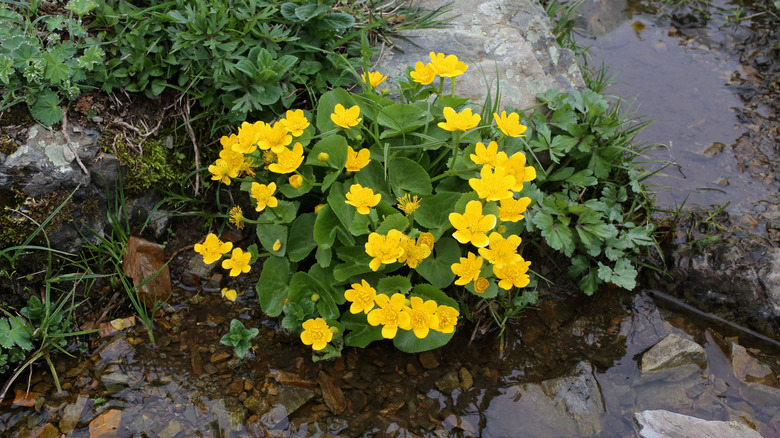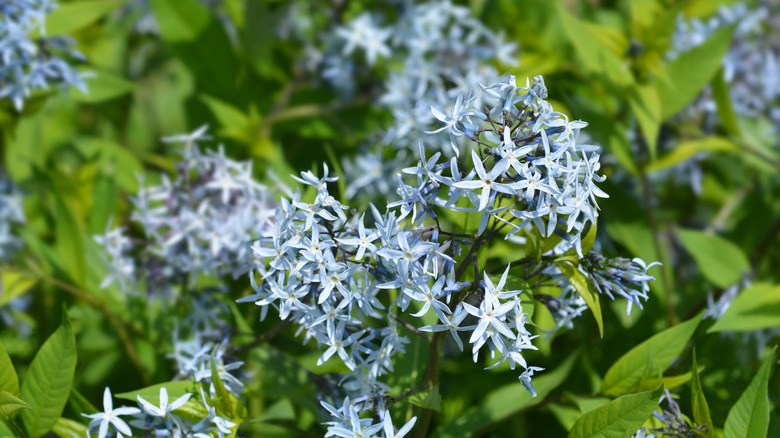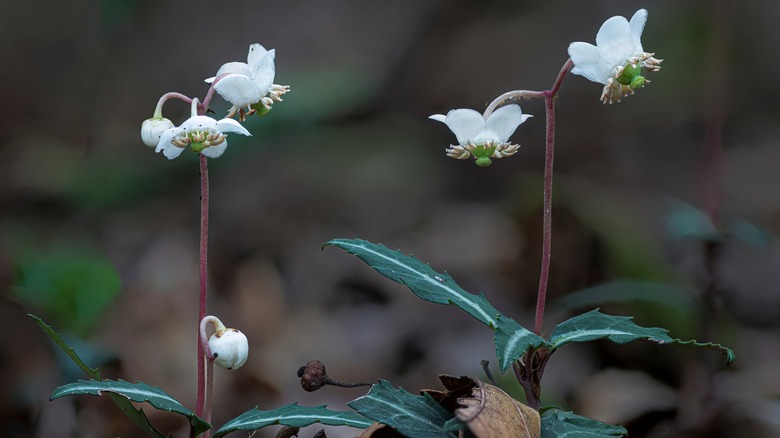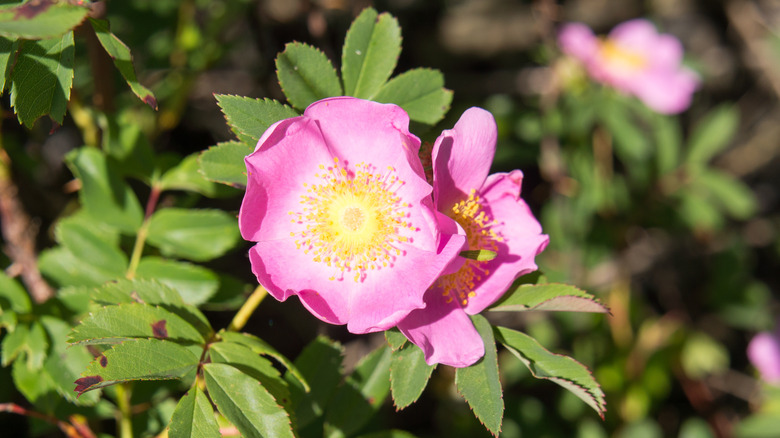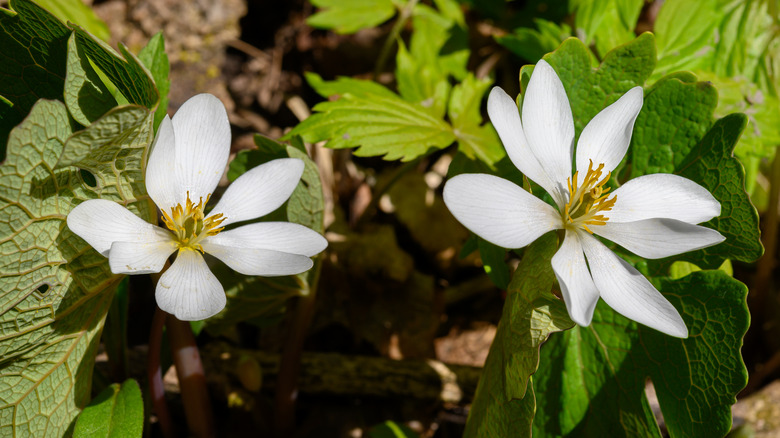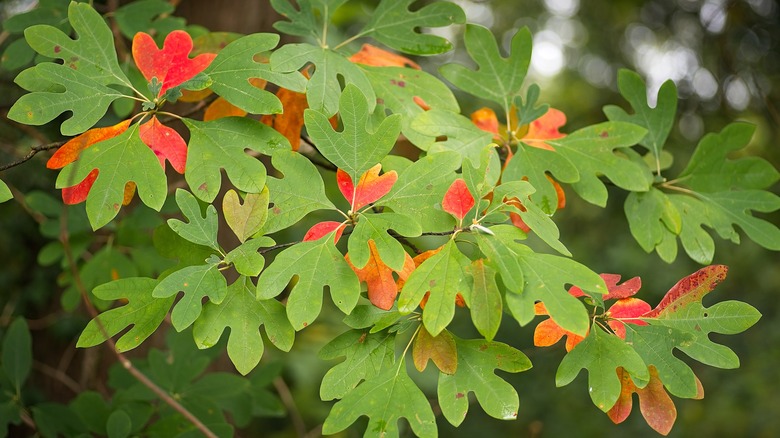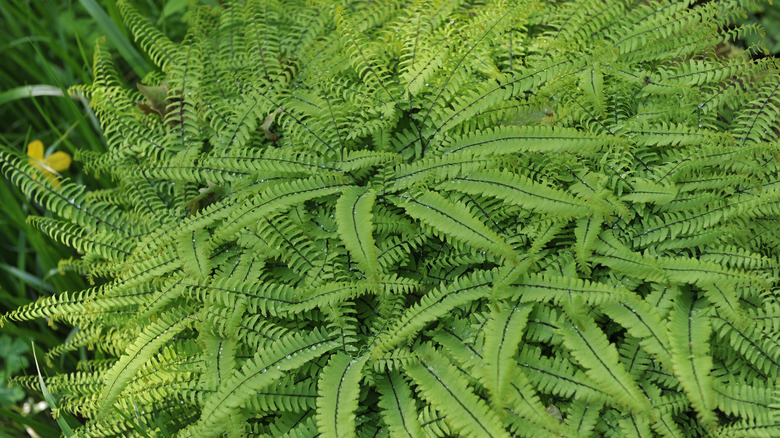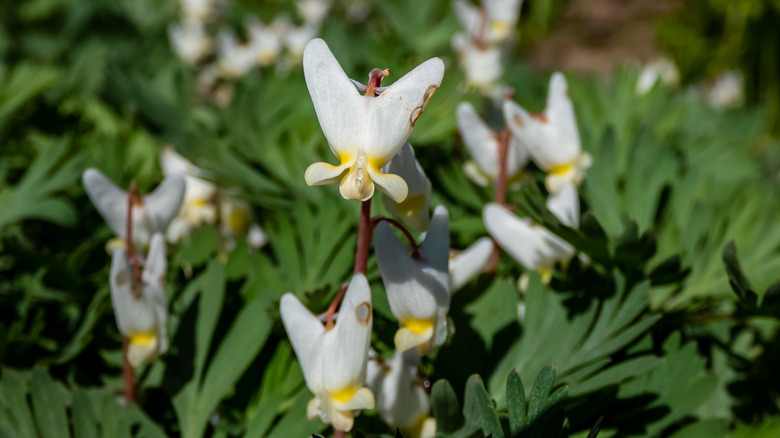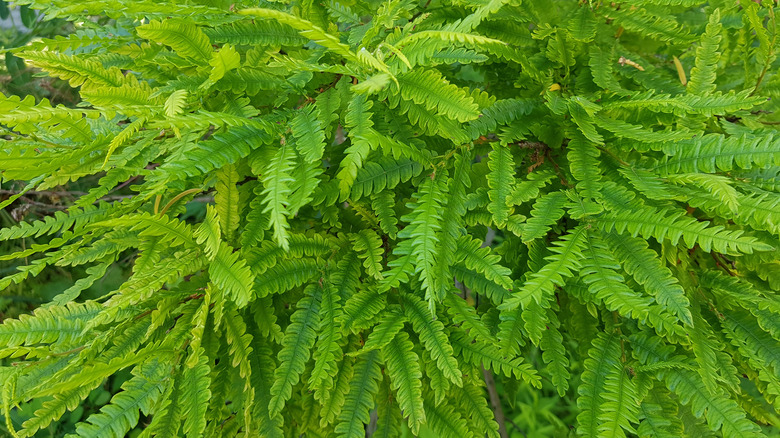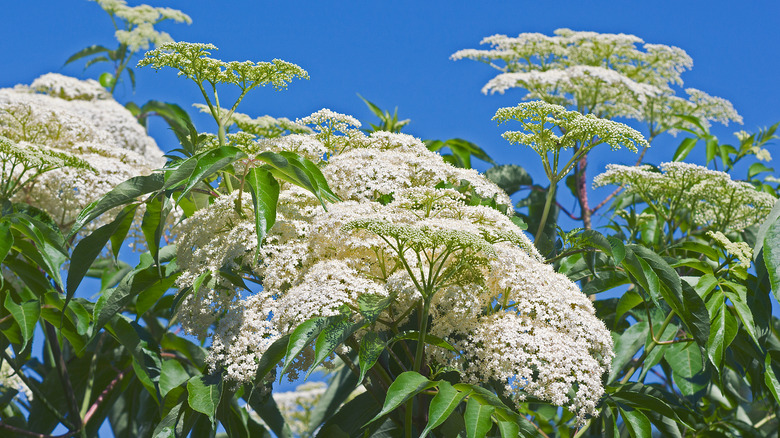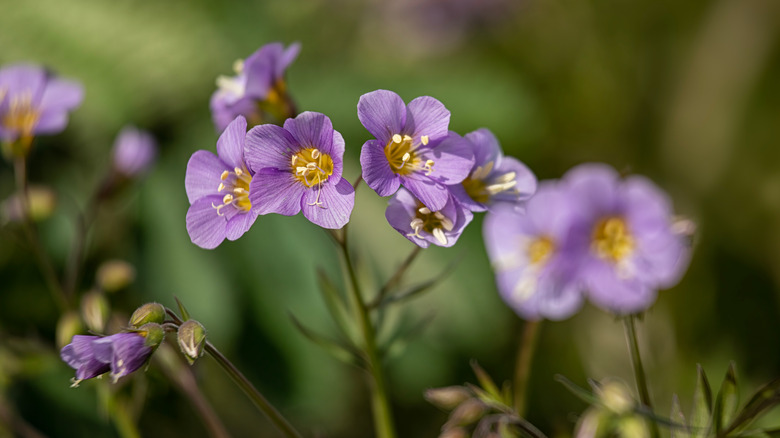15 Best Native Plants To Grow If You Live In New England
Maine, Vermont, New Hampshire, Massachusetts, Connecticut, and Rhode Island come together to make up what is known as New England. These six states share the most northeastern corner of the United States where they stretch across a geographically diverse section of the country. From coastal plains to rolling hills, if you were to drive across New England you would experience a few different climates and many geological features. Because of this, there's a wide range of plant species that grow throughout the region. Most of them tend to be frost-tolerant, moisture-loving, and early-blooming which is perfect for New England gardens.
If you live in one of the New England states, growing native plants is in your best interest as well as the best interest of native fauna, insects, and the plants themselves, notes Grow Native Massachusetts. When grown in their native environment, many of these shrubs, flowers, and trees are extremely low-maintenance because the soil and climate provide them with everything they need. They'll be more self-reliant than other non-native plants, and they'll create a beneficial relationship with wildlife and pollinators in your area who rely on the nectar and edible fruit from these local species.
1. New York ironweed
Also called yellowroot, New York ironweed (Xanthorhiza simplicissima) is a deciduous shrub that is native to the eastern part of the United States. In nature, this colorful plant grows in moist woodland areas particularly next to stream banks, as per Missouri Botanical Garden. If you plan to grow this spreading shrub in your New England garden, plant it somewhere with shade.
Bloom Season: Spring
USDA Growing Zone: 3 to 9
Growing Conditions: Partial shade to full shade
Soil Type: Moist, humus rich, and well-draining
Size: Up to 3 feet tall and 10 feet wide
2. New Jersey tea
The New Jersey tea plant (Ceanothus americanus) is known for its clusters of white flowers and its compact shape. This flowering hedge is attractive to pollinators such as bees, butterflies, and hummingbirds. However, the most interesting thing about the New Jersey tea plant is that its leaves became a substitute for imported tea during the American Revolution, as noted by Prairie Nursery.
Bloom Season: Summer
USDA Growing Zone: 3 to 9
Growing Conditions: Full sun to partial shade
Soil Type: Well-draining loam or sand
Size: 2 to 3 feet tall
3. Common juniper
The common juniper tree (Juniperus virginiana), which is often called the eastern red cedar, is native to the eastern United States. Common juniper is regularly used in the garden or as a front lawn specimen. It is a dependable tree that thrives in a variety of conditions, and it's resistant to common plant killers like poor soil, salt, and drought, according to North Carolina State Extension.
Bloom Season: Spring and winter
USDA Growing Zone: 2 to 9
Growing Conditions: Full sun to partial shade
Soil Type: Evenly moist and well-draining
Size: 30 to 40 feet tall
4. Liverwort
Liverwort (Hepatica nobilis) from the buttercup family, is also referred to as liverleaf. This is because its leaves resemble the three-lobed human liver, as described by the University of Wisconsin-Madison. In the past, this plant has been used to treat certain medical conditions, however, it is now considered dangerous to use because of its irritating and poisonous properties. Still, its unique leaves and flowers make it an interesting specimen to use in the garden.
Bloom Season: Spring
USDA Growing Zone: 4 to 8
Growing Conditions: Partial to full shade
Soil Type: Rich and well-draining
Size: About 1 foot tall
5. Marsh marigold
The marsh marigold (Caltha palustris) also belongs to the buttercup family, not the aster family, as you may expect after seeing its flowers. Marsh marigolds tend to grow freely in wet areas where they have access to fresh water. In your garden, this flower should be planted on the edge of a pond or another water feature, advises Missouri Botanical Garden.
Bloom Season: Spring
USDA Growing Zone: 3 to 7
Growing Conditions: Full sun to partial shade
Soil Type: Wet and boggy shallow water
Size: 12 to 18 inches tall and wide
6. Eastern blue star
The extremely low-maintenance eastern blue star (Amsonia tabernaemontana) grows all over the eastern part of the United States. Typically, the eastern blue star flower is found in woodlands, wet prairies, and along stream banks, according to New Moon Nursery. However, it does very well in a home garden when provided with plenty of sunlight and water.
Bloom Season: Spring
USDA Growing Zone: 4 to 9
Growing Conditions: Full sun to partial shade
Soil Type: Evenly moist and well-draining
Size: 3 feet tall and wide
7. Spotted wintergreen
Spotted wintergreen plants (Chimaphila maculata) can be identified by their waxy, serrated leaves and their fragrant pink flowers. In the summer, this plant attracts some beneficial insects such as bees and butterflies. If you live in the northeastern United States, you may already have these growing on your lawn; Jersey-Friendly Yards suggests keeping them.
Bloom Season: Spring and summer
USDA Growing Zone: 6 to 7
Growing Conditions: Partial to full shade
Soil Type: Organic, acidic, and dry
Size: 3 to 12 inches tall and wide
8. Beach plum
The beach plum (Prunus maritima) is a native deciduous shrub, which also bears edible fruit. Beach plums are commonly used in cottage and rustic gardens in New England where they are easily grown with limited maintenance. As suggested by Monrovia, you should pair other native plants with your beach plum such as butterfly bushes.
Bloom Season: Spring
USDA Growing Zone: 3 to 7
Growing Conditions: Full sun
Soil Type: Loose and fast-draining
Size: 3 to 6 feet tall and wide
9. Bloodroot
The bloodroot plant (Sanguinaria canadensis) is much prettier than its name implies. A native wildflower, this plant is named after its red sap that can be used as a natural paint or dye, explains the University of Wisconsin-Madison. When bloodroot is in bloom during the spring its symmetrical white flowers steal the show, however, it also produces large, unique leaves that hold their own ornamental value.
Bloom Season: Spring
USDA Growing Zone: 3 to 8
Growing Conditions: Partial shade to full shade
Soil Type: Evenly moist and well-draining
Size: 6 to 10 inches tall and 3 to 6 inches wide
10. Sassafras tree
The sassafras tree (Sassafras albidum) is prized for its color-changing foliage and fragrant bark, roots, and leaves which have been compared to root beer, Fruit Loops, and cinnamon. As mentioned by the Arbor Day Foundation, Sassafras trees have been used in the past to treat certain ailments, but today many parts of the plant are considered dangerous or toxic.
Bloom Season: Early spring
USDA Growing Zone: 4 to 9
Growing Conditions: Full sun to partial shade
Soil Type: Acidic, moist, and well-draining
Size: 30 to 60 feet tall and 25 to 40 feet wide
11. Maidenhair fern
The maidenhair fern (Adiantum pedatum) is a leafy garden plant that pairs well next to bright flowers or colored foliage. They should not be exposed to full sun, so they make a good addition to a shade garden. You could also grow them as ground cover under larger plants, advises Prairie Nursery. When they reach maturity, maidenhair ferns are drought-tolerant, deer-resistant, and low maintenance.
Bloom Season: Summer
USDA Growing Zone: 3 to 8
Growing Conditions: Partial shade to full shade
Soil Type: Slightly damp and well-draining
Size: 1 to 2 feet tall
12. Dutchman's breeches
Dutchman's breeches (Dicentra cucullaria) is a native deciduous wildflower that is well-known for its pants-shaped flowers that grow on arching and leafless stems, says North Carolina State Extension. When growing these flowers in your garden, keep in mind that all parts of the plant are poisonous to humans. If this plant is eaten it will likely lead to a variety of dangerous symptoms.
Bloom Season: Spring
USDA Growing Zone: 3 to 7
Growing Conditions: Dappled sunlight to partial shade
Soil Type: Well-draining
Size: 3 to 6 inches tall and 6 to 8 inches wide
13. Sweet fern
Sweet ferns (Comptonia peregrina) are a species of deciduous shrubs native to eastern North America. They are often used in native gardens and rain gardens, and are regarded for their sweet-smelling, bright green foliage. This plant also produces non-showy yellow-green flowers in the spring, notes Missouri Botanical Garden.
Bloom Season: Spring
USDA Growing Zone: 2 to 6
Growing Conditions: Full sun to partial shade
Soil Type: Sandy, acidic, and well-draining
Size: 2 to 5 feet tall and 4 to 8 feet wide
14. Common elderberry
Common elderberry (Sambucus canadensis) is well-known for its edible berries that can be used to make drinks, jellies, and syrups. It is a tall-growing shrub that can reach up to 10 feet high when raised properly, explains Prairie Nursery. The common elderberry grows best along New England stream banks where it receives plenty of sunlight and moisture.
Bloom Season: Spring to summer
USDA Growing Zone: 3 to 7
Growing Conditions: Full sun
Soil Type: Moist clay, loam, or sand
Size: 6 to 10 feet tall
15. Jacob's ladder
Jacob's ladder (Polemonium reptans) is a woodland wildflower known for its scented spring blossoms. This low-growing plant thrives in a variety of conditions as long as it is planted in the right kind of soil. As explained by Penn State Extension, this species is a great option for a northeastern pollinator garden.
Bloom Season: Spring
USDA Growing Zone: 3 to 8
Growing Conditions: Full sun to partial shade
Soil Type: Fertile, moist, and well-draining
Size: 12 to 18 inches tall
